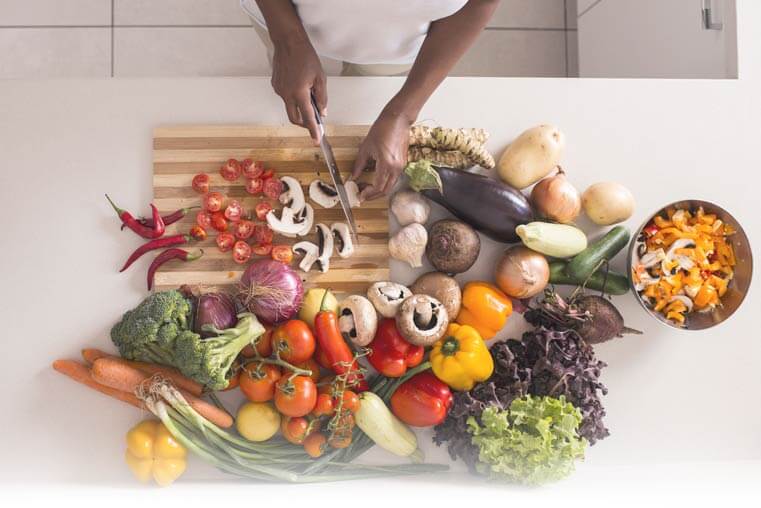Snacking isn’t usually considered a healthy practice, thanks to the number of high-fat, high-sugar foods typically consumed between meals. But one study indicates that the right kind of snacking can not only prevent obesity but also prevent the onset of uterine fibroids and related fibroid pain.
Healthy snacking helps BMI
Published in April 2015 in the Journal of the Academy of Nutrition and Dietetics, this three-year study examined both the BMI (body mass index) measurements and the diets of 2,696 individuals from both the United States and the United Kingdom. The goal was to analyze how diet (including frequency of eating) impacted BMI.
The conclusion of the study was that snacking can actually contribute to a healthy weight. People who ate six times or more throughout the day enjoyed healthier BMIs than those who ate four times a day or less. In addition, those who ate more frequently were less likely to eat the high levels of saturated fat, salt, and sugar that are often consumed later in the day, when people who ate less tended to eat the most.
Evidence that healthy snacking helps fibroids
This study is a promising one for women trying to prevent uterine fibroids, symptoms of fibroids, and fibroid pain. Obese women risk developing fibroids two- to three times more than women who are a healthy weight. This is thought to be because obesity contributes to hormone-driven fibroids because it produces higher levels of hormones in the body.Therefore, maintaining a lower BMI can mean having fewer hormones encouraging the growth of large fibroids in the uterus.
However, using snacking to your advantage means eating the right kinds of foods. Obesity might contribute to the development of fibroids, but so could a diet high in saturated fat. This type of diet is also linked to greater levels of hormones in the body.5 At the same time, foods high in fiber (such as whole grains) can help to reduce the number of hormones in the body, allowing you to not only reduce your risk of developing fibroids, but also control your weight.5,6
To help you snack better, here are a few tips and suggested snacks for eating in between meals.
Tips for healthy snacking
- Eat fruits and vegetables at every meal. By doing so, you will enjoy more of the health benefits of these good foods, and enjoy a greater intake of fiber!
- Treat every snack as a meal. If you construct each snack as a mini-meal, you will achieve the balance of nutrients needed to keep you energized and healthy throughout the day.
- Eat before you are ravenous. If you wait until you are starving to eat, you are more likely to overeat. Instead, eat when you are hungry, and stop when you are full.
- Give your body time to tell you it’s full. Your body needs about 20 minutes to tell your brain it is full, according to the British Nutrition Foundation.7 As a result, eat slowly enough to give your body time to send these signals to prevent overeating.
Healthy snack ideas
Use these easy recipes to up-level the health quotient in your snacks. And they may help improve your fibroid symptoms, too!
- Sardine Salad Lettuce Wraps. Sardines are rich in omega-3 fatty acids (containing 500-1,000 milligrams in every 3 ounces).8 Turning them into a salad with a little bit of mayonnaise and combining them with veggies and lettuce can make for a tasty and healthy snack.
- Peanut Butter & Fruit Stack. A brown rice cake, layered with peanut butter and fresh fruit can provide you with a jolt of healthy sweetness and lots of protein.
- Fresh Veggies and Hummus. Hummus has lots of fiber and protein (1.5 grams of dietary fiber for every tablespoon), plus, when combined with vegetables, is a tasty treat.
- Yogurt with Fresh Fruit and Hemp Seeds. Pick plain, low-fat yogurt, your favorite fruit, and some hemp seeds for additional fiber and omega-3 for a delicious and satisfying snack.
- Berry Piña Colada Smoothie. For a healthy smoothie, blend ½ cup plain low-fat Greek yogurt, ¼ cup unsweetened almond milk, ¼ cup coconut milk, ¼ cup fresh pineapple, 5 frozen dark sweet cherries, and ¼ banana. Dairy may help to prevent fibroids and all of their related fibroid pain, so consuming low-fat dairy as part of your snacks can help you to further prevent large fibroids.
Beyond healthy snacks for fibroids
At Viva Eve, The Fibroid Experts, we’re committed to providing high-quality, personalized care for each and every patient we see. We will partner with you to determine the best way to treat your problematic fibroids or adenomyosis.
Sources for information referenced in this post
- Aljuraiban, G. S.,Chan, Q., Oude Griep, L. M., Brown, I.J., Daviglus, M. L., Stamler, J., Van Horn, L., Elliott, P., Frost, G. S. (2015). The impact of eating frequency and time of intake on nutrient quality and body mass index: the INTERMAP Study, a population-based study. Journal of the Academy of Nutrition and Dietetics, 115(4): 528-536. doi:10.1016/j.jand.2014.11.017.
- US Dept of Health and Human Services, Office on Women’s Health. (2015). Retrieved April 14, 2015, from Uterine Fibroids Fact Sheet.
- Sarwer, D. B., Spitzer, J. C., Wadden, T. A., Rosen, R. C., Mitchell, J. E., Lancaster, K., Courcoulas, A., Gourash, W., & Christian, N. J. (2013). Sexual functioning and sex hormones in persons with extreme obesity and seeking surgical and non-surgical weight loss. Surgery for Obesity and Related Diseases, 9(6). doi:10.1016/j.soard.2013.07.003
- Khan, A. T., Shehmar, M., & Gupta, J. K. (2014). Uterine fibroids: current perspectives. International Journal of Women’s Health, 6: 95-114. doi:10.2147/IJWH.S51083
- Pizzorno, J. E., & Murray, M. T. (2013). Textbook of natural medicine (4th). St. Louis, MO: Elsevier Churchill Livingstone.
- American Heart Association. (2015). Retrieved April 30, 2015, from Whole Grains and Fiber.
- British Nutrition Foundation. (2013). Retrieved April 29, 2015, from Understanding Satiety: Feeling Full After a Meal.
- Seafood Health Facts. (2011). Retrieved April 29, 2015, from Omega-3 Content of Frequently Consumed Seafood Products.
- Wise, L. A., Radin, R. G., Palmer, J. R., Kumanyika, S. K., & Rosenberg, L. (2010). Aprospective study of dairy intake and risk of uterine leiomyomata. American Journal of Epidemiology, 171(2): 221-32. doi: 10.1093/aje/kwp355
This post is informational only and is not intended as a replacement for medical advice, for the services of a physician, or as a substitute for any other professional medical treatment.



